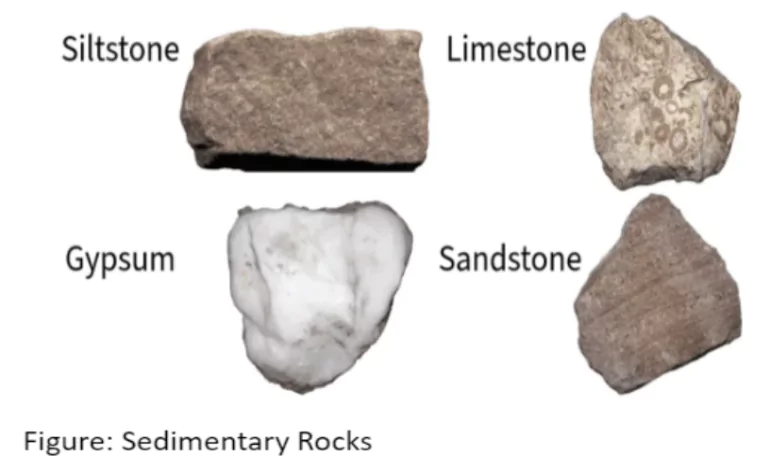![]() April 26, 2024
April 26, 2024
![]() 9563
9563
![]() 0
0
Rocks are natural aggregates of minerals, formed through geological processes over millions of years. Unlike minerals, rocks do not have a definite chemical composition and can vary widely in color, hardness, and texture. Petrology, the science of rocks, focuses on studying their composition, texture, and formation processes.
Primary rocks are classified into three main types: Igneous, Sedimentary, and Metamorphic.
 Gabbro: Mafic igneous rocks equivalent to extrusive basalt.
Gabbro: Mafic igneous rocks equivalent to extrusive basalt.

Result of deposition of fragments of rocks by exogenous processes. These deposits through compaction turn into rocks and this process is called Lithification.
Formed out of existing rocks that undergo recrystallisation.

| Must Read | |
| Current Affairs | Editorial Analysis |
| Upsc Notes | Upsc Blogs |
| NCERT Notes | Free Main Answer Writing |
 Igneous rocks are the starting point in the rock cycle, and other types of rocks are formed from them.
Igneous rocks are the starting point in the rock cycle, and other types of rocks are formed from them.Rocks are natural formations shaped by geological processes over time, categorized into three main types: Igneous, Sedimentary, and Metamorphic. Each type has distinct characteristics and formation processes, providing insights into Earth’s history and landscapes. Understanding rocks is essential for various fields, from construction to archaeology, as it helps unravel Earth’s past and present conditions.
| Related Articles | |
| Volcanic Landforms | UNDERSTANDING ROCKS SYSTEM |
| Earth’s Interior | GEOGRAPHICAL PHENOMENON: VOLCANISM |
<div class="new-fform">
</div>

Latest Comments